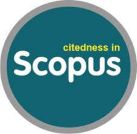Online Submissions
Already have a Username/Password for Metodik Didaktik?
Go to Login
Need a Username/Password?
Go to Registration
Registration and login are required to submit items online and to check the status of current submissions.
Author Guidelines
Article Submission Guidelines
Manuscripts must be written in English using proper grammar and academic style. They should be typed on A4-size paper (210 mm x 297 mm) with 1.5 line spacing and a maximum length of 20 pages, using Times New Roman font, 12 pt.
The title must be written in English, consisting of no more than two lines (approximately 10–15 words), and must reflect the core idea of the article. Author names are listed below the title without academic degrees or professional titles, followed by their institutional affiliation and email address. The title is written in Times New Roman, 16 pt.
The abstract must be written in Bahasa Indonesia, with a maximum of 200 words, summarizing the essence of the entire article. Use Times New Roman, 10 pt, with single line spacing.
Keywords must be included below the abstract, with a maximum of five keywords, in English.
Tables must be numbered sequentially and accompanied by a clear and concise title in Bahasa Indonesia. Commas (,) are used for decimal points, and periods (.) for thousands.
Figures, such as graphs or illustrations, must be in high-contrast black ink and numbered. Each figure must include a clear title and caption in Bahasa Indonesia, using proportional and readable fonts.
Photographs must be of high resolution and include appropriate titles and captions in English.
The manuscript should be organized into consistent sections based on the nature of the article. The writing structure includes the title, author name(s), institutional affiliation, and email, followed by abstracts (in English and Bahasa Indonesia), keywords, introduction, research methods (if applicable), results and discussion, conclusions and suggestions, and references.
The conclusion should provide a concise summary of the discussion and address the research problem. It must follow the same formatting as other sections, without using bullet points or numbering.
The reference list should include at least ten primary sources published within the last ten years. References must follow the APA (American Psychological Association) style. To avoid formatting errors, the use of reference management tools such as Mendeley is highly recommended.
Examples of references:
Book
Anderson, L. W., Krathwohl, D. R., & Airasian, P. W. (2000). A taxonomy for learning, teaching, and assessing: A revision of Bloom’s taxonomy of educational objectives. Longman.
Journal Article
Brown, H. D., & Lee, H. (2015). Teaching principles for autonomous learning in primary education. Journal of Educational Research and Practice, 5(2), 45–58. https://doi.org/10.1234/jerp.v5i2.4567
Conference Proceeding
Suryana, D. (2019). Development of Android-based interactive learning media for primary school students. In A. Widodo (Ed.), Proceedings of the National Seminar on Educational Technology (pp. 55–64). State University of Jakarta.
Website
Ministry of Education and Culture. (2023). Independent curriculum for elementary schools. https://kurikulum.kemdikbud.go.id/sd
Thesis or Dissertation
Wulandari, A. (2020). The effect of scientific approach on critical thinking skills of elementary school students (Undergraduate thesis, Indonesia University of Education). http://repository.upi.edu/123456/
Edited Book Chapter
Richards, J. C. (2017). The changing face of language teaching. In C. Coombe, M. L. Davidson, B. O. Barrera, & D. Lloyd (Eds.), The Cambridge guide to language teacher development (pp. 25–33). Cambridge University Press.
Privacy Statement
The names and email addresses entered in this journal site will be used exclusively for the stated purposes of this journal and will not be made available for any other purpose or to any other party.
.png)
Universitas Pendidikan Indonesia, Purwakarta Campus
Jl. Veteran No. 8. Purkawarta
West Java, Indonesia
Email: metodikdidaktik@upi.edu


























